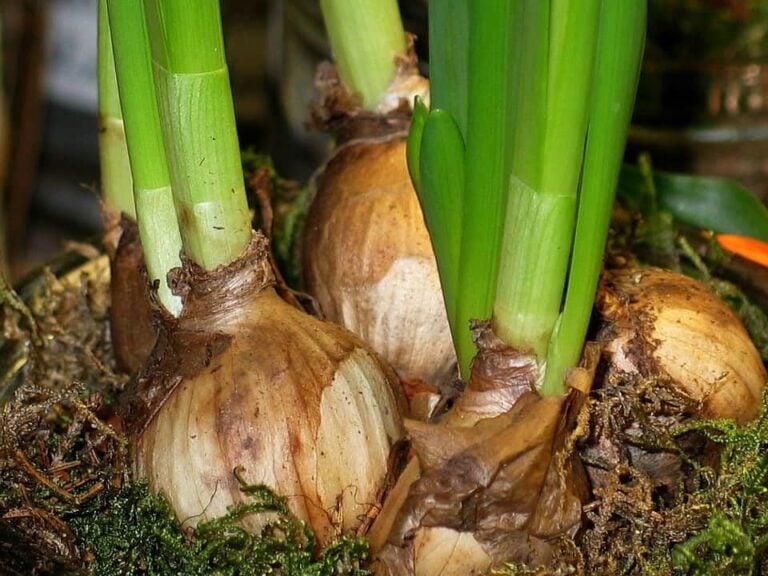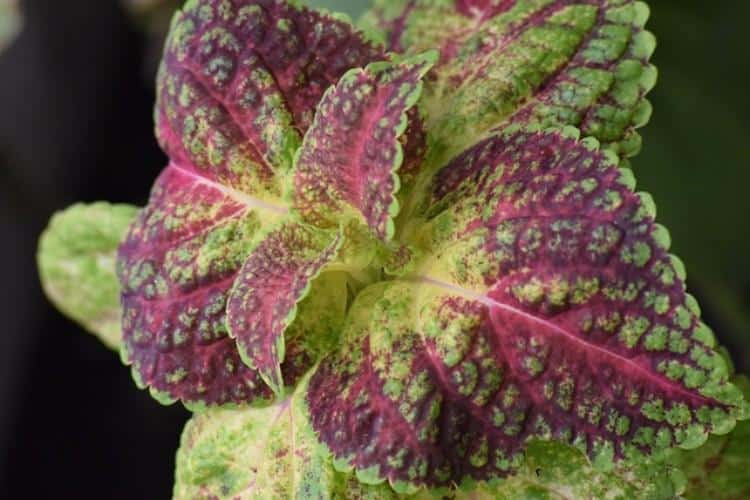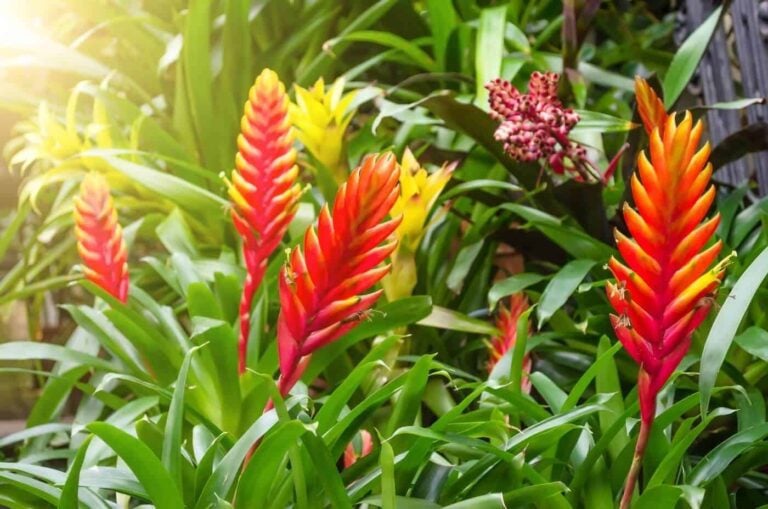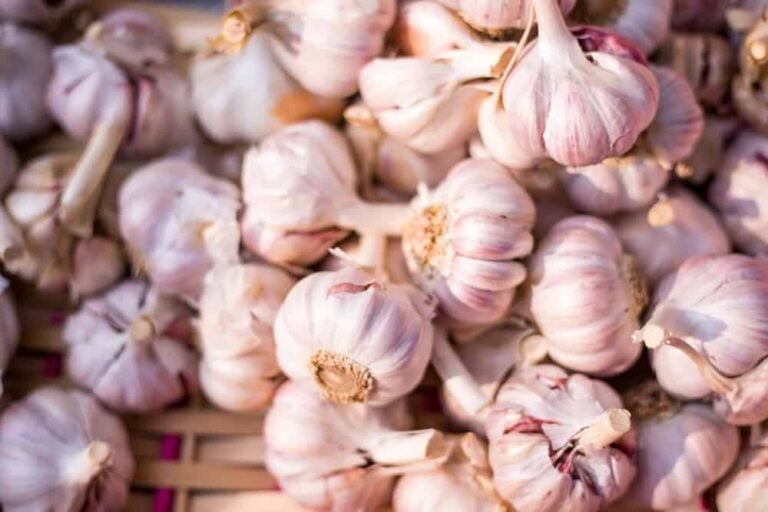Efficient Ways of Growing Onions from Bulbs
Being in the right place at the right time is the key to success for growing onions from bulbs or sets. Onions vary by the amount of sun that they need for good bulb formation. The latitude, temperature, and hours of daylight of your location will determine which ones will do best in your area. With regular watering and weeding, you can take these shallow-rooted plants from bulbs to a successful harvest in less than 120 days.
Site Location
Your site location plays a vital role not only in the type of onions you can grow but the flavor of the final product too. Onions require anywhere from 11 to 16 hours of sunlight a day.
The optimal day length or photoperiod, depends on the type of onion, explains Jim Myers of the Oregon State University Department of Horticulture.
Soil type also influences the growth of onions. For example, if your site has heavy clay soils, you can expect onions that are stronger in flavor. With sandy soils, you can expect the opposite result.
Soil drainage comes into play again. Your soil type will determine how much extra watering you need to do and how much fertilizer you should apply. Faster-draining sandy soils will need more of both. Heavier soils may hold onto water longer, requiring less maintenance.
Types of Onions
Onions are classified based on the amount of sunlight they need to form bulbs. Short-day onions need about 12 to 13 hours a day. Intermediate-day onions, on the other hand, do best with about 14 hours of sunlight. Finally, long-day onions require the most sun, with 14 to 16 hours per day. For onions, it isn’t a matter of how much difference a day makes. It’s the hours that are more important.
While a difference between one or two hours may not seem a lot, it matters a lot to the onion. While you can grow short-day onions in the South, long-day onions won’t thrive without the extra sunlight, explains Clemson Cooperative Extension. The ideal conditions for growing a particular type of onion from bulbs is a mix of the right amount of daylight, temperature, and latitude.
Planting Onions
Sets are dormant planting bulbs. It is one out of three ways you can plant onions, with the others being by seeds or transplants. The advantage of growing onions from bulbs is that they have a head start already. You should choose sets that are less than one inch in diameter. Planting larger sets or bulbs can cause bolting.
Bolting occurs when onion plants grow a flower stalk to take it to seed. The problem is that the plant will direct its energy and food toward flower growth instead of the bulb formation. Then, you’ll have a harvest of bulbs not much bigger than the ones you planted.
Dry Bulbs or Scallions?
Onions prefer fertile soils that are slightly on the acidic side with a pH of between 6.0 and 6.8. How you plant your onions depends on the end product you want. The difference lies with whether you want a full-sized dry bulb or green bunching onions or scallions.
You can grow any onion as either dry bulbs or scallions. For the former, plant your smaller onion sets about one inch down, leaving about two inches in between plants. For green onions, plant the larger of your sets a little deeper at 1 ½ inches. Regardless of the onion end product, you should space rows about 12 to 18 inches apart.
Maintenance
Onions require a bit of work on your part which differs slightly depending on the end product. Since they are shallow rooted, you’ll need to water them frequently. You’ll have to keep weeds in check during the entire growing season. Weeds can overrun an onion patch—despite their pungency.
For green onions, you can mound some soil around the base of the plant to get the characteristic white stems. The soil prevents sunlight from reaching these parts of the plants and essentially, blanches them.
With dry onions, it’s a different story. The mounds of earth around the base of the plant may encourage rot in dry onions. Let their tops peek out from under underground as they grow.
Pest Management
Like any garden plant, onions have their share of problems. As you may expect, frequent watering carries some risk of disease due to the favorable conditions it creates. Rot can develop in any part of the plant. Likewise, downy mildew or botrytis blast remain a concern.
Keep an eye out for insect pests, such as onion root maggots and thirps. Fortunately, they are not as much of a problem with onions. If you keep the weeds under control and manage your garden well, your onions will do fine. However, avoid planting onions and related plants like leeks more than once every four years to reduce the risk of pests.
Harvesting Your Onions
Harvesting onions varies with the end product. For green bunching onions, you should harvest them when the green tops are about six inches high. But don’t wait too long. If you keep them in the ground past that time, you’ll end up with onions with a stronger flavor.
Harvesting Dry Onions
Harvesting dry onions consists of a two-part process. First, you begin with gathering the onions based on the look of the tops. If most of it is falling over, it’s time to harvest. Pull onions from the ground, taking care not to bruise the bulbs. Dry onions are named so such a reason.
Second, you will need to dry your onions thoroughly in a place with good air circulation. This step is necessary to prevent bacteria from developing so you can store your harvest. Keep your onions with the tops intact in any place where they can air dry without danger of them getting wet. Joe and Zach Survival show how the curing process works.
The bulbs may shrink a bit as they dry out. It should take less than 10 days, depending upon your location. At that point, the onion will have formed something of a natural seal to prevent rotting. Once dried, your harvested onions will keep best when stored in cool, dry conditions.
The trick to growing onions from bulbs begins with the right choice of onion type based on your location. With regular weeding and watering, you will be able to reap a good harvest that will keep adding flavor to your meals throughout the year.
Photo by Charles Rondeau licensed under CC0 1.0.






